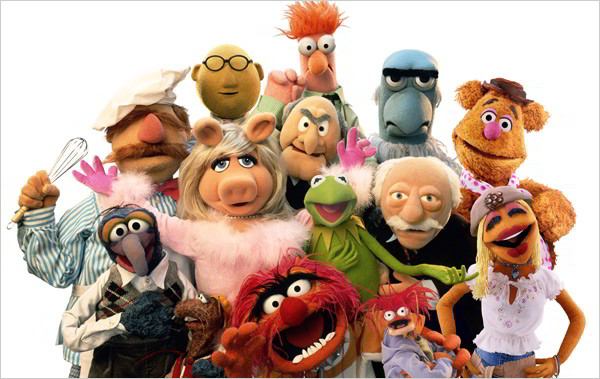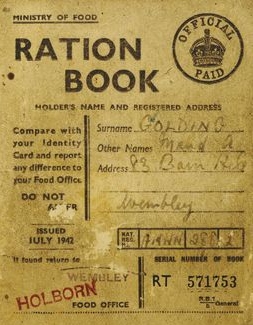
The 60s had started a culture of independent thought. Independent thought brought with it a social revolution that the 70s would build on and change the way we live. The emancipation of women was a key feature of this revolution, helped by the affordability of the microwave and washing machine (which occupied 64% of homes). While all this was going on another revolution was slowly gathering momentum, not yet noticed by the masses but as a background rumble foretelling of massive technological change: the computer and email were on their way.

In retail independent thought quickly mutated into self service. Self service had been around since the 50s with Woolworths slowly converting its sweet counters to Pick ‘n’ Mix. It was a slow transition, with a fair amount of opposition, but the 70s witnessed the wholesale abandonment of counter service to self service across all retail, and Pick and Mix as we know it today was born.
The 60s pioneered a culture of freedom of choice and risk taking. The 70s ran with this but tried to assert some control and reign in some of the excesses of the previous decade. Smoking was rebranded as bad and this led to the removal of the red end of Candy Cigarettes and the renaming of them as Candy Sticks. However anyone who grew up in the 70s knew what they really were! Such was the opposition to smoking that the pipe bowl bit of Liquorice Pipes was also turned down at a later date.
The 50s had been a decade of conformity and restrictions, the 60s did its best to shed these values and move society to a place of greater freedom and liberal thinking, while hanging onto a sense of community. The 70s saw a growth in individualism, where self expression and self improvement seemed to get the upper hand. During this time of social change one would hope that sweeties would provide a stable comfort zone of sameness and predictability but that was not to be.

The 70s saw a squeeze on traditional boiled sweets and the old ‘weigh-out’ sweet shops. Crisps, fizzy drinks (in cans with the new fangled litter proof ring-pull) and chocolate bars all presented strong competition for the new metric Pound Note. Decimalisation took over in 1971. The TV advertising of branded products worked its magic with Golden Wonder Crisps, and Cadbury’s chocolate which saw massive growth. The huge expansion in supermarkets didn’t do any favours for traditional sweets or sweet shops either. Sadly our ‘weigh-out’ sweet shops embarked on a steady decline. Tastes were also changing with the introduction of new flavours and textures: chewy sweets and the new foam style sweet gained in popularity and, like it or not, American candy started to hit our shores. Traditional boiled sweets managed to hold their own but they now had to share the limelight with an astonishing array of alternative tasty treats.

Sweets are of course very central to a child’s growth and development but there was more for the 70s child: entertainment!. We had Teeny Boppers and their pop idols – the Bay City Rollers, David Cassidy and the Osmond’s. Punk Rock had its heyday and then there were those who would stand the test of time – Queen, Pink Floyd, Abba and David Bowie. It was a seminal decade for pop music. The toys were just as good, Evel Knievel, Barbie, Wonder Woman and the Chopper Bike. If we were tired of toys, a trip to the cinema to see Star Wars or Grease would do. Colour TV found its way into our living rooms in the early 70s to bring us Rainbow, The Wombles and The Muppets. The Six Million Dollar Man TV series was family viewing as was Dr Who with Tom Baker.
Change can be difficult but worth it. Changes in the 70s lead to the production of some of the best sweeties we enjoy today and the way we buy them. The Curly Wurly bar was launched in 1971. Skittles were introduced in 1974 and Popping Candy arrived in 1975, having being patented by an American chemist in 1956. 1976 saw the introduction of the Yorkie, Double Decker and Lion Bars.

I make the claim that you can tell someone’s age by the sweets they buy. Observation tells me that people continue to buy the sweets that they were buying at the age of 10 with their pocket money and first bit of independence.
The 1970’s jar is a carefully chosen mix of tastes and textures representative of that decade. Let these sweets take you back in time.









 Outside the shop you would be standing in the old Great North Road at a section once known as The Squeeze, which used to be longer when there were shops forming an island in the middle of the road in front of the college. These shops were called Middle Row and were the original location of the Barnet market which received it’s charter from King John in 1199. Middle Row was demolished after a fire in 1889.
Outside the shop you would be standing in the old Great North Road at a section once known as The Squeeze, which used to be longer when there were shops forming an island in the middle of the road in front of the college. These shops were called Middle Row and were the original location of the Barnet market which received it’s charter from King John in 1199. Middle Row was demolished after a fire in 1889.

